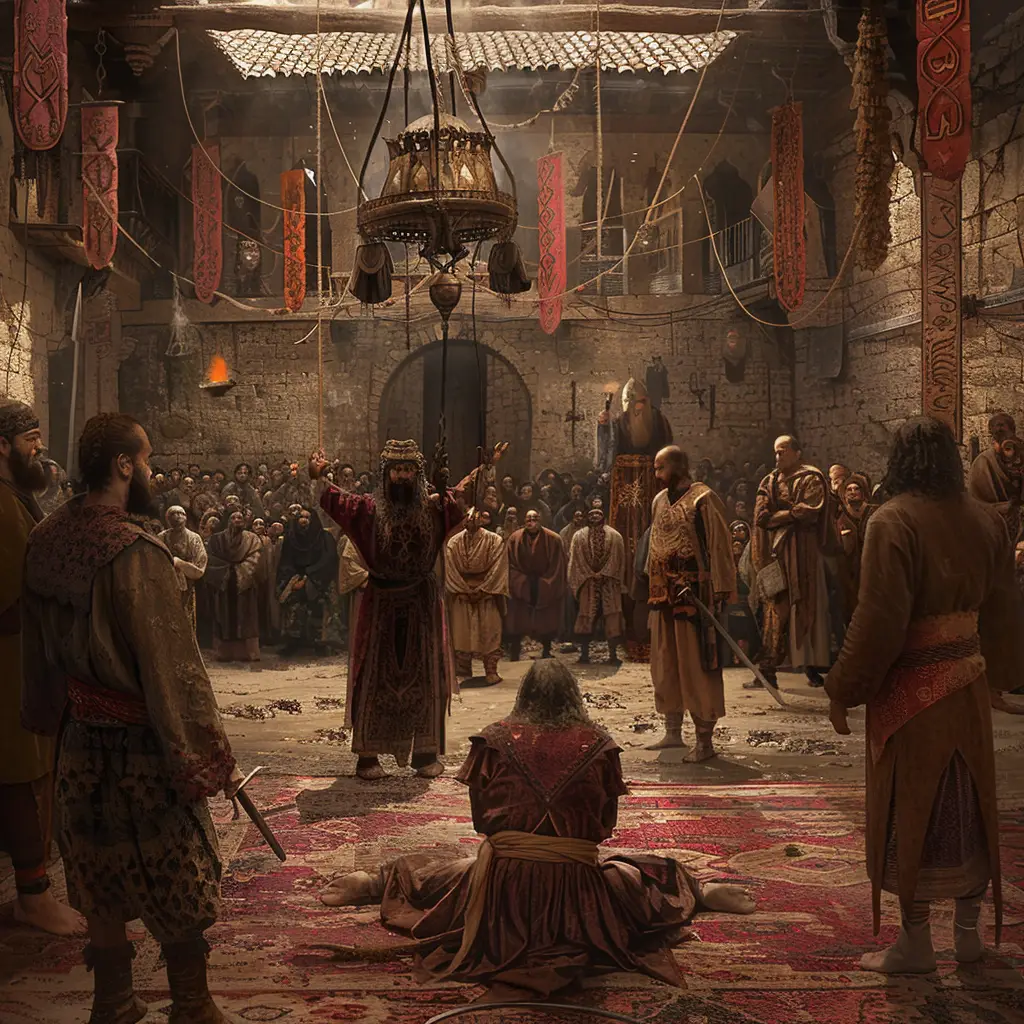Ancient warfare was a brutal and ruthless business where armies would stop at nothing to emerge victorious. In the records of history, warfare has often been marked by brutal strategies and cunning tactics. Ancient civilizations, driven by the desire for power and conquest, employed a range of methods to gain an advantage on the battlefield.
From siege engines to biological warfare, ancient armies were ready to do anything to emerge victorious. Among these tactics were some of the dirtiest and most morally dubious approaches to warfare, But then, nobody really cared about morality in those periods. In this article, we will look into some dirty tactics used in ancient warfare, which might still be in use today.
Scorpion Bombs

The Parthians and other Eastern armies ingeniously employed this unconventional weapon of war to sow fear and chaos among their enemies. These devices were essentially clay or ceramic jars packed with live scorpions, chosen for their venomous stings and terrifying appearance. During battles, these containers were either thrown by hand or launched using catapults into the ranks of opposing forces. In the siege of Hatra by the Romans, The defenders of Hatra reportedly used scorpion bombs against the besieging Roman forces When the Romans attempted to scale the walls or breach the gates, the defenders would hurl containers filled with scorpions, creating panic and forcing a retreat.
Upon shattering, the scorpions would scatter, causing immediate panic and confusion. Soldiers, unprepared for such an assault, often broke ranks and fled, disrupting the cohesion of their units. This psychological impact was the primary intent behind using scorpion bombs, as the fear and anxiety they induced could significantly undermine the morale of even the most disciplined troops.
The actual physical threat posed by the scorpions varied depending on their species, with some stings causing severe pain, swelling, or, in rare cases, death. However, it was the sheer unpredictability and terror of a sudden swarm that made these weapons effective. In siege scenarios, defenders used scorpion bombs to repel attackers scaling walls or breaking through defenses, creating a temporary but decisive advantage.
Spreading Plagues and Diseases
Ancient civilizations understood how diseases spread, and although they did not know the cause of these diseases, this did not stop them from using plagues to their advantage during wars. Imagine a siege where the weapons aren’t arrows or stones, but the bodies of the diseased dead. This was the horrifying reality during the Mongol siege of Caffa in 1347, where plague-infested corpses were catapulted into the city, unleashing a deadly epidemic among the defenders. This unconventional attack probably led to the spread of the black death, which would go on to kill some 40 million people in Europe.
The ancient Scythians were known for their gruesome archery tactics. They would dip the points of their arrows in rotting corpses and feces, creating weapons that could inflict not just physical wounds, but deadly infections. Even if a victim survived the initial attack, the festering toxins could lead to a slow, agonizing death.
These ancient examples illustrate the shocking lengths to which combatants have gone to harness the power of disease on the battlefield. From catapulting plague-ridden bodies to poisoning water supplies, biological warfare has a long and disturbing history that continues to haunt us today.
Mass Executions and Impaling.

Terror tactics and psychological warfare were also commonplace in ancient warfare. They are used to break an opponent’s willingness to fight or to induce a change in a rival power’s policies or behaviour. One way ancient people did this was to publicly execute large numbers of captured enemies. During the Roman conquest of Judea, the Roman general Titus crucified thousands of Jewish rebels, leaving them to rot on the crosses. This tactic had a profound psychological impact on the defenders, causing widespread fear and demoralization.
Imagine approaching a city, only to be met with a forest of gruesome stakes, each impaling the twisted body of a screaming victim. This was the horrifying reality for the foes of Vlad the Impaler, the ruthless prince who inspired Bram Stoker’s Dracula. Vlad impaled about 20,000 people outside his city, creating a chilling spectacle designed to shatter the enemy’s will to resist. The Ottomans were so unnerved by the spectacle that they completely gave up on attacking the mad prince.
Another gruesome form of mass executions is the Nine Familial Exterminations practised in ancient China. This appalling custom involved executing not just the offender, but their entire extended family – up to nine generations – as a form of collective punishment. The mere threat of this horrific fate must have struck terror into the hearts of potential transgressors.
These mass executions, whether by impalement or extermination of entire families, were more than just punishments. They were calculated spectacles of horror, designed to break the enemy’s morale and demonstrate the terrifying consequences of opposition. In the brutal calculus of ancient warfare, the lives of innocents were mere pawns to be sacrificed on the altar of psychological domination.
Rivers as Weapons of War
Rivers have long been the lifeblood of civilizations, providing sustenance, transportation, and fertile land. But in the hands of cunning military strategists, these natural waterways became deadly weapons, unleashing the raw power of nature against unsuspecting foes.
Picture the besieged city of Nineveh in ancient Assyria, its defences seemingly impenetrable. But the besiegers, in a stroke of brilliant tactics, diverted the Khosr River, unleashing a torrent of floodwaters that inundated the city defences and paved the way for conquest. Similarly, during the siege of Xiapi, Cao Cao’s forces redirected the Yi and Si rivers, transforming the natural flow into a deluge that washed away their enemies.
Hulagu Khan, the Mongol conqueror of Baghdad, harnessed the fury of the Tigris River in a different way. He used the river’s floodwaters to trap the caliph’s horsemen outside the city walls, rendering them easy prey for the Mongol archers. This clever manipulation of the river turned the tables of the battle and sealed the fate of the city.
Rivers were more than just natural barriers; they were weapons to be harnessed, their power channelled to devastating effect. In the hands of ancient warlords, these life-giving waterways became instruments of conquest and destruction, demonstrating the ingenuity and ruthlessness of warfare in the ancient world.
Genocide and Ethnic Cleansing
Warfare has always brought devastation, but few practices rival the sheer horror of genocide and ethnic cleansing. These tactics, which aim to destroy or forcibly remove entire ethnic or religious groups, have left deep scars on the tapestry of human history. While the terms “genocide” and “ethnic cleansing” are often used interchangeably, genocide focuses on the physical annihilation of a group, while ethnic cleansing emphasizes forced removal from a specific territory.
The Persian Empire’s destruction of the Ionian Greeks in the 5th century BC stands as a chilling example of ancient genocide. The Persians, driven by a desire for dominance, sought not just to conquer, but to erase an entire people from existence. Similarly, the Assyrian Empire was notorious for its mass deportations of conquered peoples, a form of ethnic cleansing that reshaped the demographic landscape of the ancient Near East. These forced migrations tore communities asunder, scattering families and cultures to the winds.
These horrific practices, while deeply disturbing, offer a sobering glimpse into the darker side of human nature. From the ancient world to modern times, genocide and ethnic cleansing have remained a tragic constant of warfare, a grim reminder of the lengths to which hatred and a lust for power can drive humanity.
